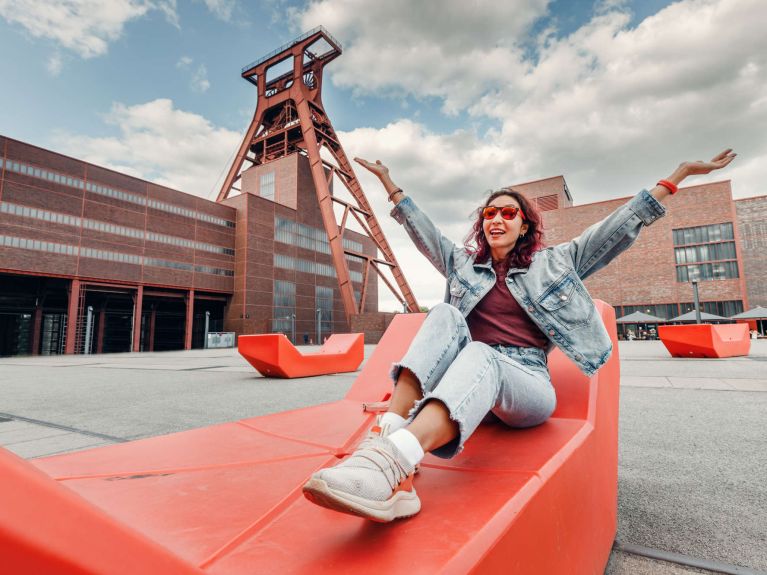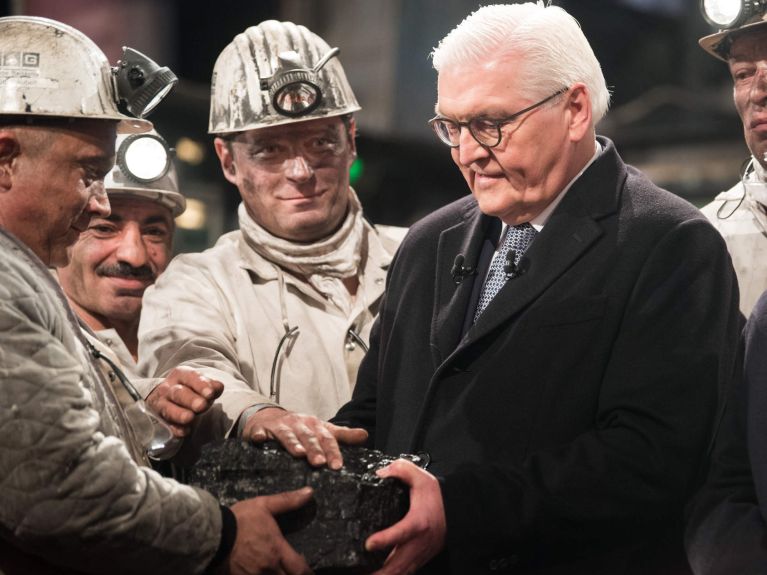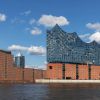Reinventing the former coal region
The Ruhr region, originally shaped by intense coal mining, was once the heart of German industry. Here you can find out how the region has changed.

Virtually no other region has changed as profoundly in recent decades as the Ruhr region in western Germany – from a coal and steel region to a metropolitan region that is seeking to shape the economy of tomorrow. The new Ruhr region is considered a model for the transformation of industrial landscapes.
Where is the Ruhr region located?
The Ruhr area is located in the west of Germany, mainly in the state of North Rhine-Westphalia. Today, there are more than five million people living in more than 50 towns and cities here, making this “city of cities” one of the largest metropolitan regions in Europe. The three largest cities are Dortmund, Essen and Duisburg, each with a population of more than 400,000. The region covers a total area of just under 4,500 square kilometres: its name is derived from the River Ruhr which flows through it.
Why was the Ruhr region once a centre of heavy industry?
From the 19th century onwards, the Ruhr region was an impressive success story. For many decades, the region was the heart of the industrial boom in Germany due to the natural deposits of coal and iron ore to be found there, providing jobs and prosperity through numerous coal and steel production companies. Its geographical location at the heart of Europe along with a well-developed transport system made up of rivers, canals and railways facilitated the trade and transport of raw materials and products.
What did the end of the coal industry mean for the Ruhr area?

The coal industry had already fallen into a deep crisis by the end of the 1950s: little by little, collieries were forced to close. The final farewell to coal today is also a sign of Germany’s transformation into a climate-neutral industrial country. At the end of 2018, the last coal mine closed in an area where there were once hundreds. “An era in German history is coming to an end here,” said Federal President Frank-Walter Steinmeier at the time. As part of the energy transition towards the use of renewable energies, Germany is looking to finally phase out coal production soon, including lignite. The Ruhr region had to reinvent itself as a result of a transformation that began decades ago.
What are the main features of the Ruhr region today?
The Ruhr region is a university stronghold: there are 22 universities within a relatively small area: nowhere in Germany is the network denser. The close dovetailing of business and science also provides the basis for a vibrant start-up culture.

One important economic sector is the creative industry. Cities like Essen, Dortmund and Bochum are centres of art, culture and other creative activities. The Zollverein Coal Mine Industrial Complex in Essen, a former coal mine, is particularly well known. The mine was established in 1847 and developed into one of the largest and most state-of-the-art mines for hard coal in Europe. The architecture and industrial layout of the Zollverein colliery are considered outstanding examples of the Bauhaus style and the industrial architecture of the 20th century. In 2001, the Zollverein Coal Mine Industrial Complex was declared a World Heritage Site by UNESCO and is now a cultural and industrial complex with museums, exhibitions, restaurants and event venues.
How green is the Ruhr area?
Anyone visiting this region once defined by its smoking coal chimneys will be surprised to see how green the Ruhr area is today. A study conducted for the Ruhr Regional Association by the well-known Wuppertal Institute in 2021 concluded that the region has the potential to become a global role model. The Institute’s scientific director, Manfred Fischedick, described the aim as follows: “If the Ruhr metropolis implements the transformation process in an ambitious and goal-oriented way, it could become an exemplary model region for numerous industrial conurbations worldwide – with a climate-neutral steel industry, extensively renaturalised water bodies and a strong environmental economy

